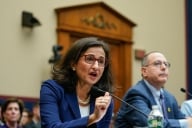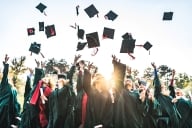You have /5 articles left.
Sign up for a free account or log in.
Those innocent-seeming brochures imploring students to find their passions and express themselves may be helping to widen the socioeconomic achievement gap, a new study finds.
A team of researchers led by Nicole M. Stephens, an assistant professor at Northwestern University's Kellogg School of Management, argues that American academic institutions expect a level of independence that is uncomfortable for many first-generation college students, who researchers say are more likely to come from poorer backgrounds that emphasize collaboration and interdependence.
“They experience more of a culture shock,” Stephens said. “The experiences and norms can be different than what they’re used to.”
By making small changes in how expectations are presented to students and how classes are taught, the researchers said, colleges can help level the playing field for first-generation students. The study will appear in a forthcoming edition of the Journal of Personality and Social Psychology.
Stephens and her four co-authors – who are from Stanford and San Jose State Universities and the University of Arizona -- commend institutions for an increased commitment to recruiting first-generation students. But despite record enrollments, they said those students tend to earn lower grades, take fewer credits, drop out more often and not participate in as many extracurricular activities as their peers with a parent who earned a college degree.
Some of those factors can be explained by the increased likelihood that first-generation students came from weaker high schools and that they work long hours to pay for school.
But they say there’s also evidence that the individualistic focus of most colleges aligns more closely with the values of middle- and upper-class students whose parents earned a degree than with those of their poorer first-generation peers. If that focus shifted, the researchers contend, the achievement gap would narrow.
“It’s all about the context that people have been exposed to before college,” Stephens said. “These are overarching differences we observed.”
Colleges tend to project the middle- and upper-class cultural norms shaped by decades of tradition. But as increasing numbers of first-generation and poor students arrive on campuses, Stephens said institutions must adjust.
The research team gave administrators at large universities and liberal arts colleges a list of 10 goals and asked which they considered the most important to their students’ development. Individual pursuits like learning to express oneself and learning to be a leader scored higher than interdependent tasks like learning to work with others or do collaborative research. That betrays a bias against learning styles favored by first-generation students, Stephens said.
She acknowledges that no two first-generation students are alike, and that some might respond well to an individual focus. But in the study, first-generation students performed better on academic tasks after reading a hypothetical university welcome letter that stressed interdependent work than they did after viewing a letter stressing individual attainment.
“Ultimately it comes down to a change in culture,” she said. “It includes the messages to our students about what we expect” in admissions materials and other publications. “But it goes much deeper than that. It also goes to what we then ask them do in the classroom. How are they asked to learn? How should they be evaluated?”
No one is proposing the elimination of individual learning. But Stephens said that the long-time focus on independent tasks often comes at the expense of group work, which is also valuable and would make first-generation students more comfortable.
“We’re looking at how context shapes these perspectives and experiences that students bring to college,” Stephens said, “and how the norms that are part of that college environment can shape students experiences in different ways.”








